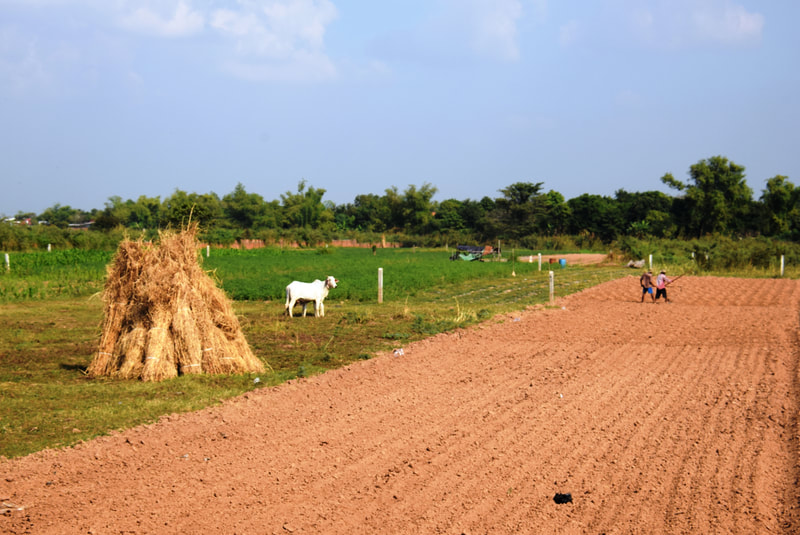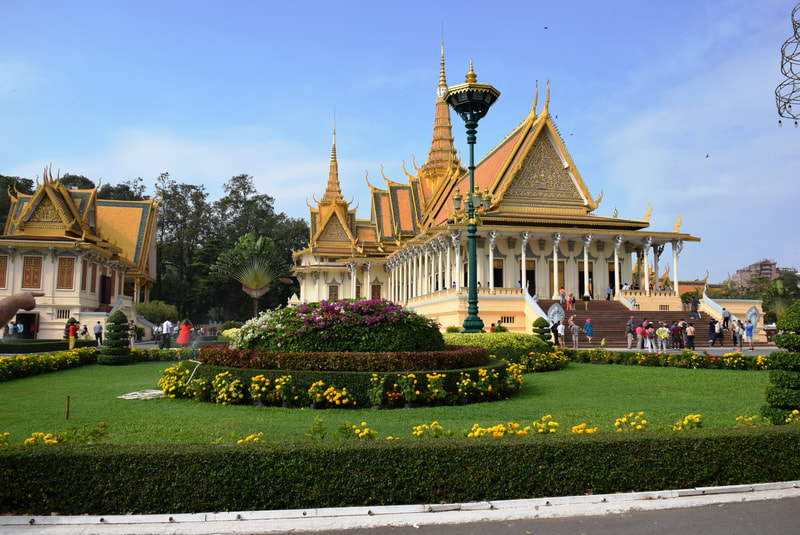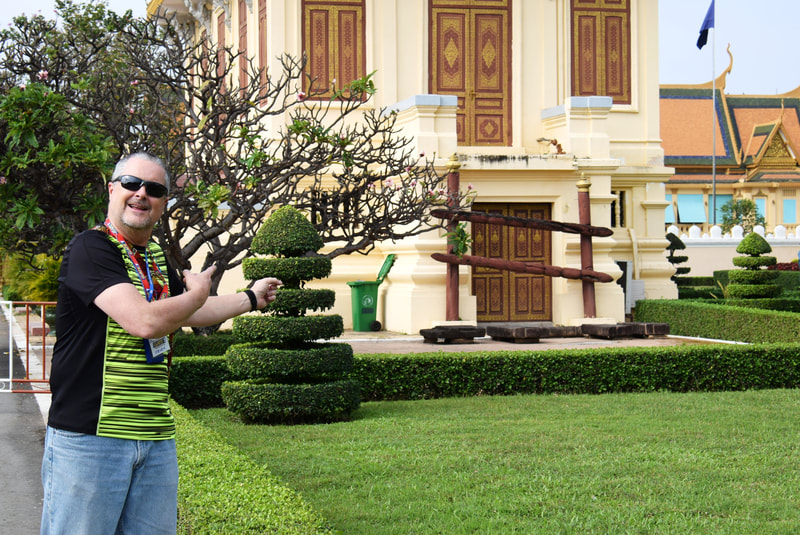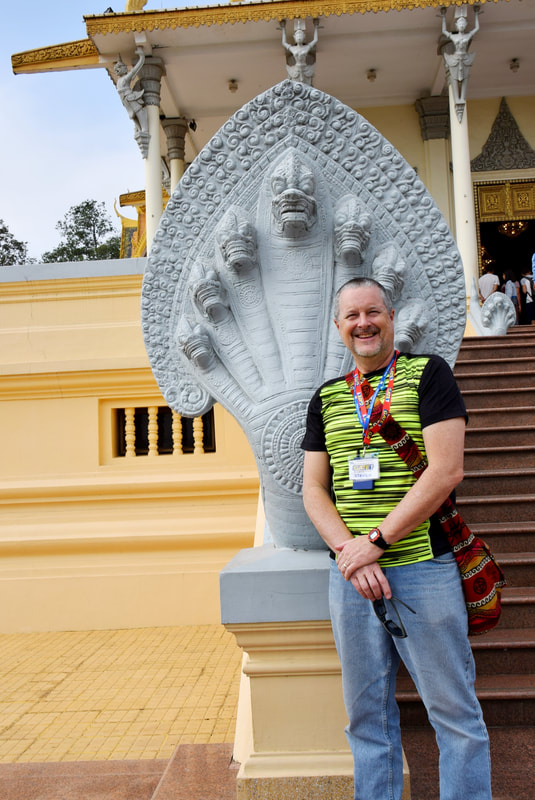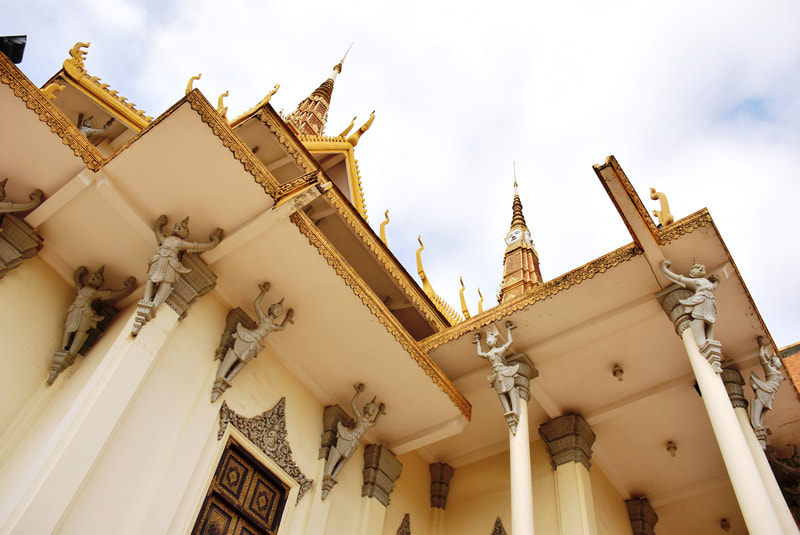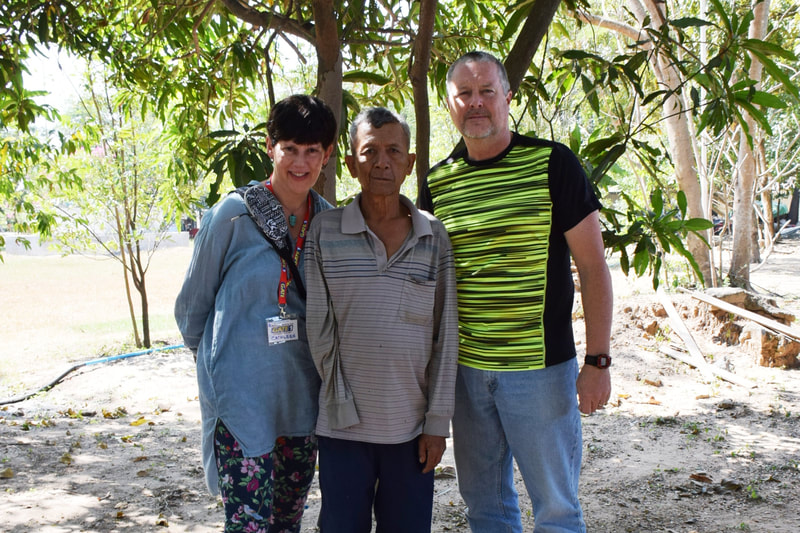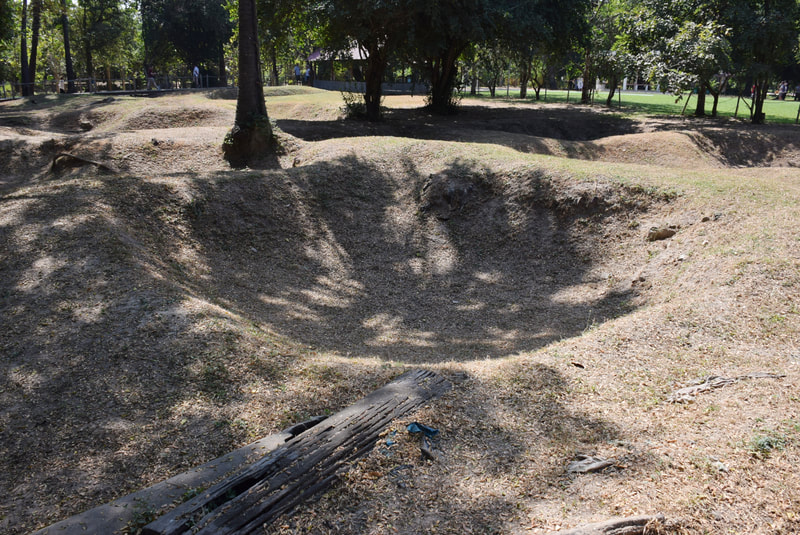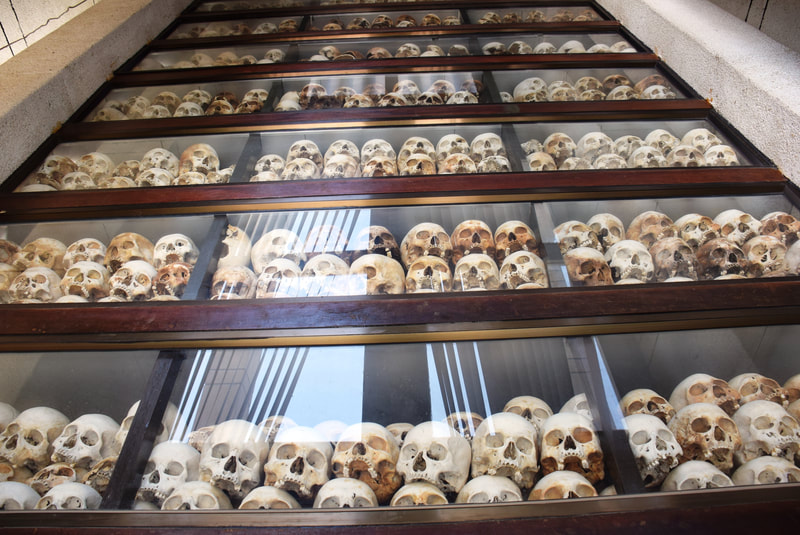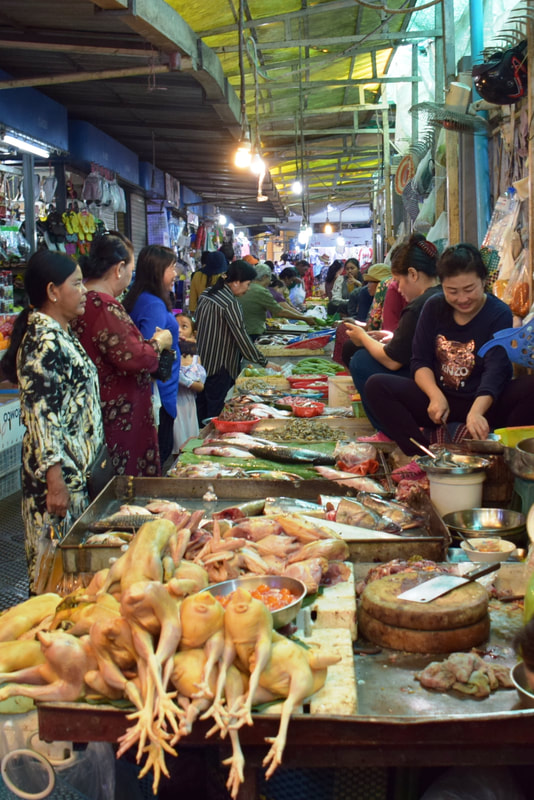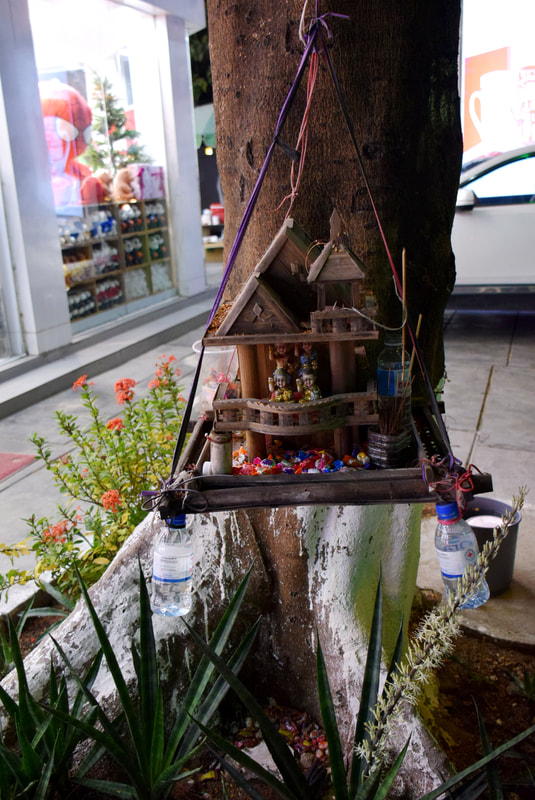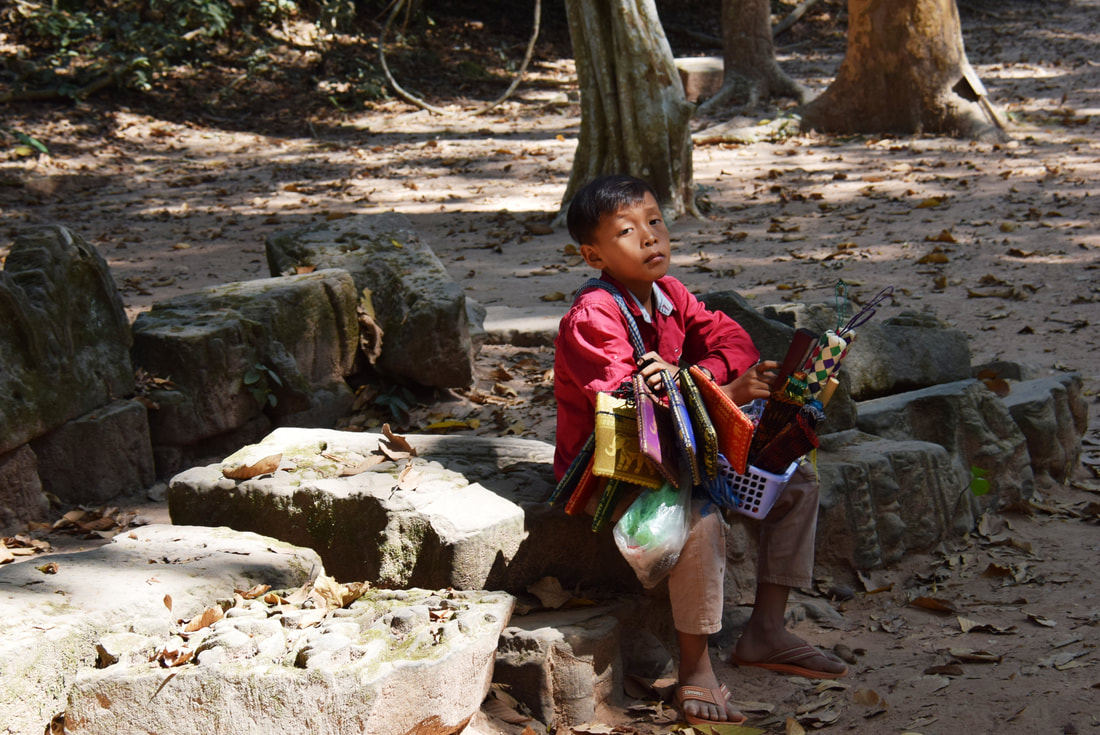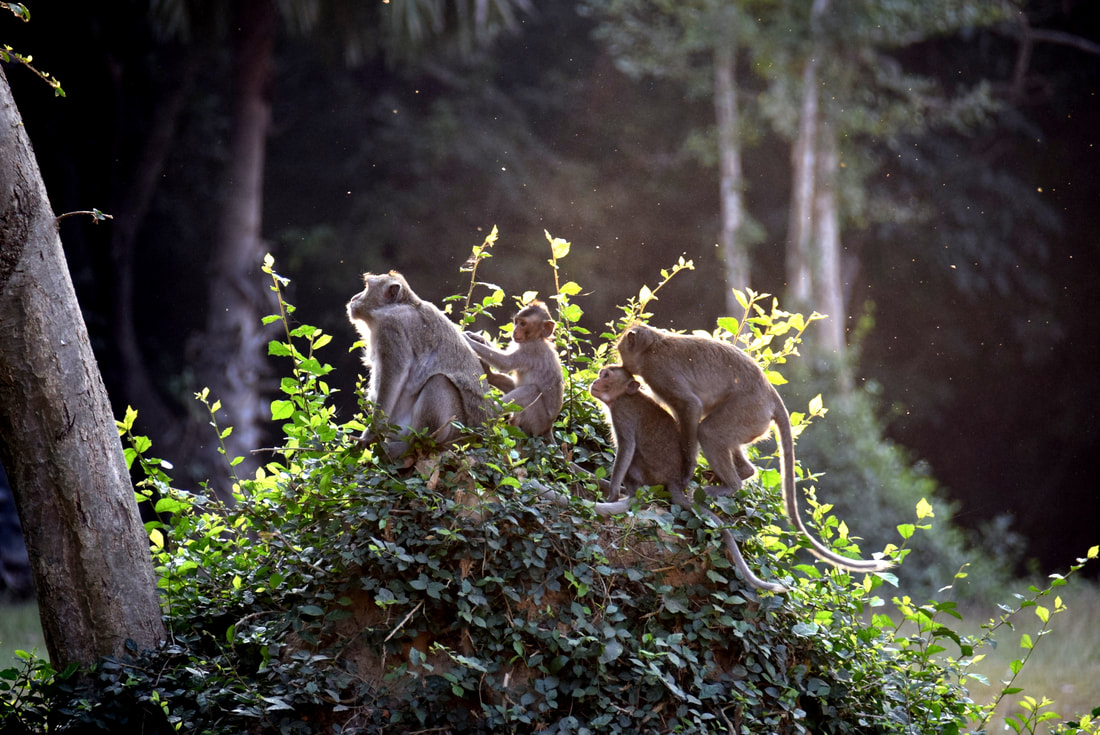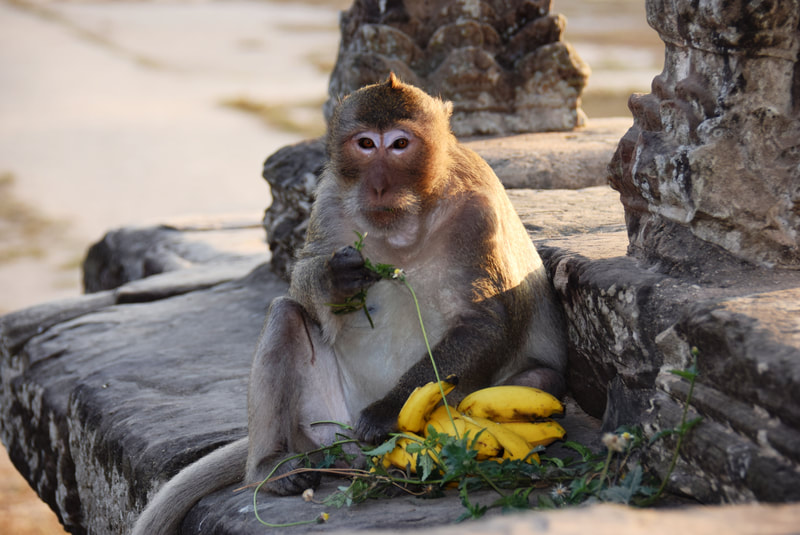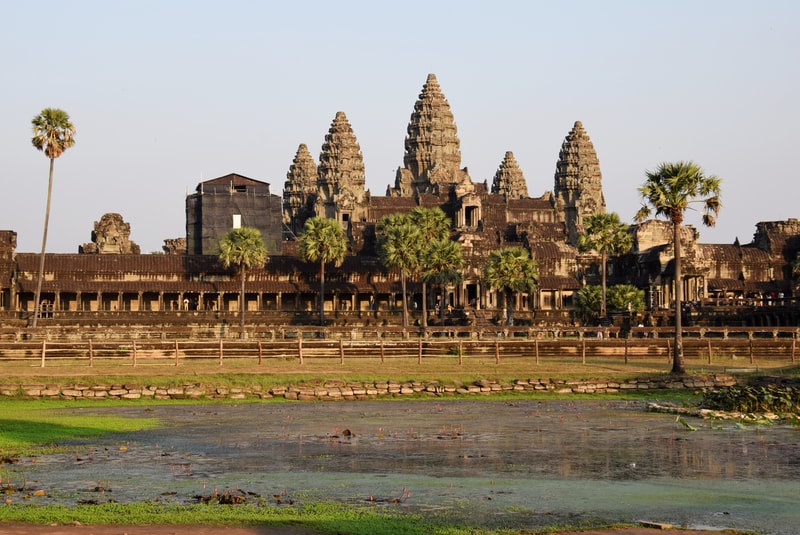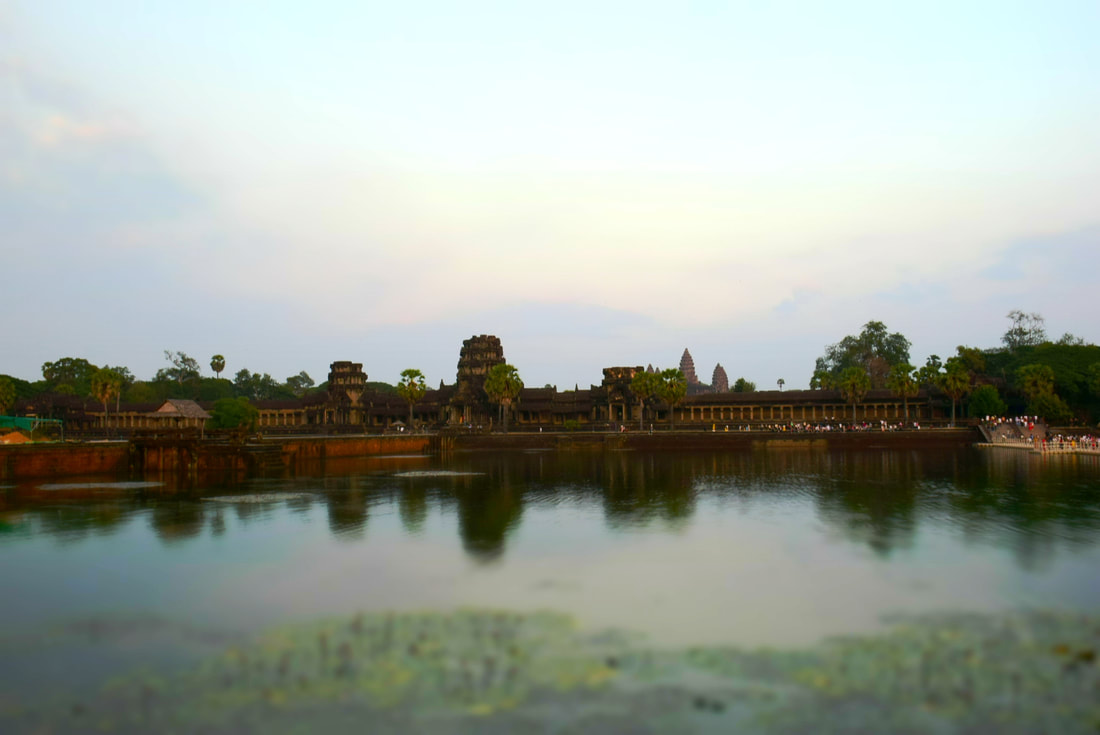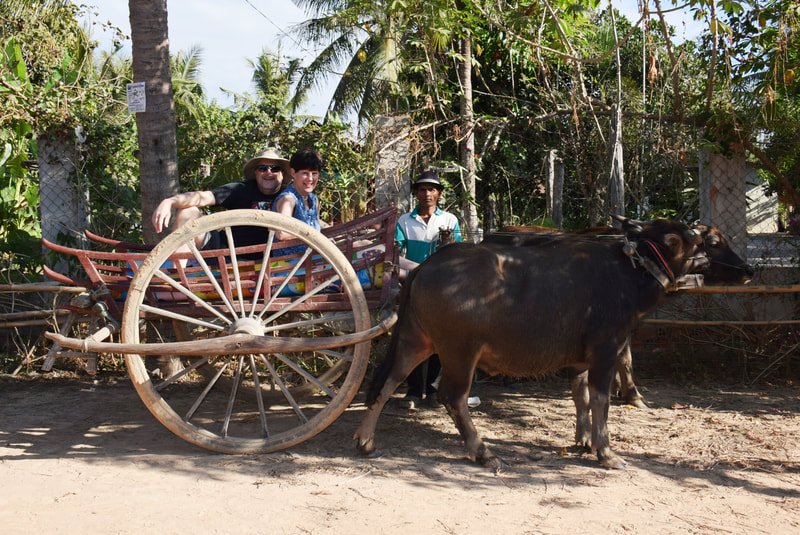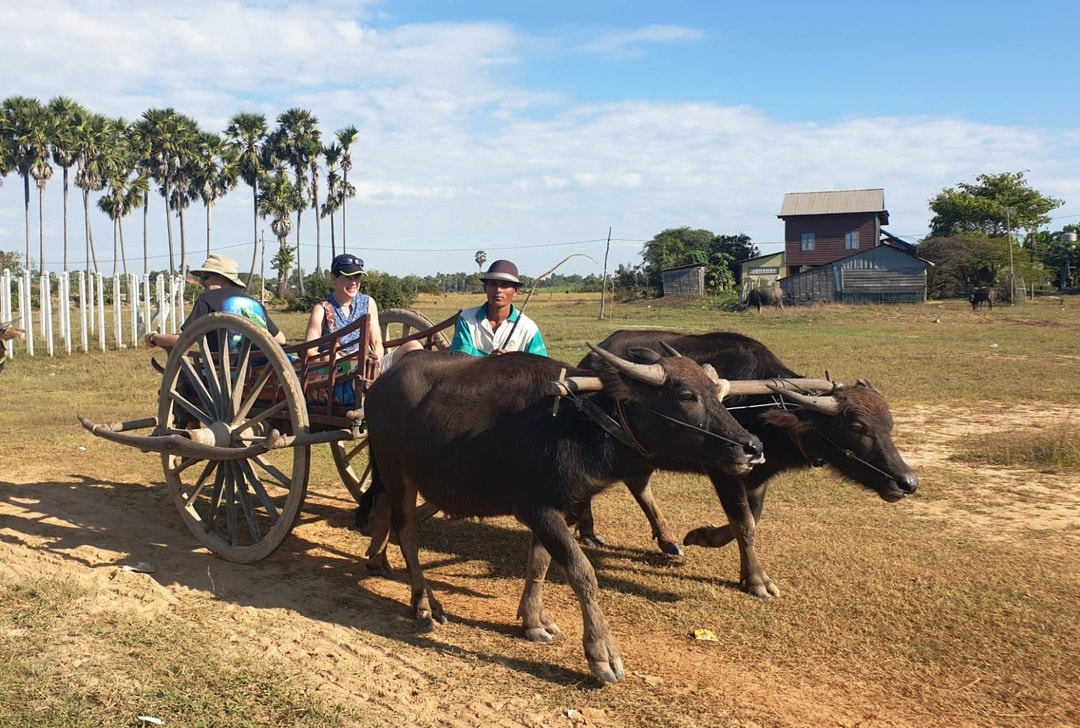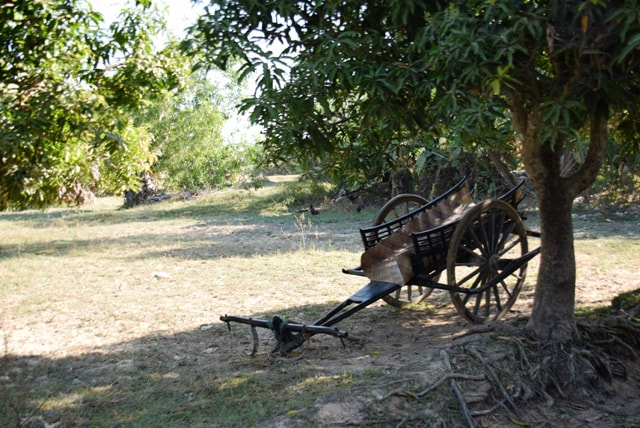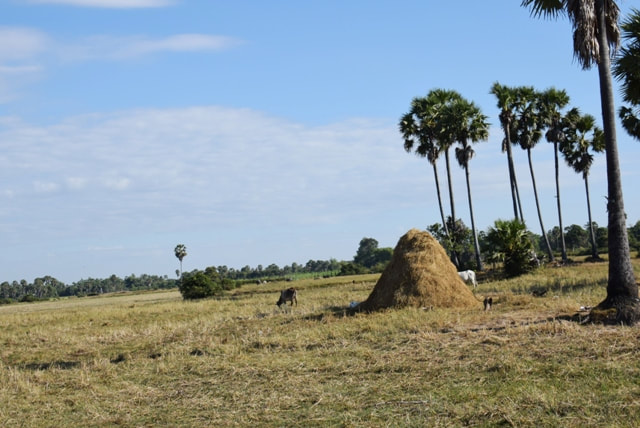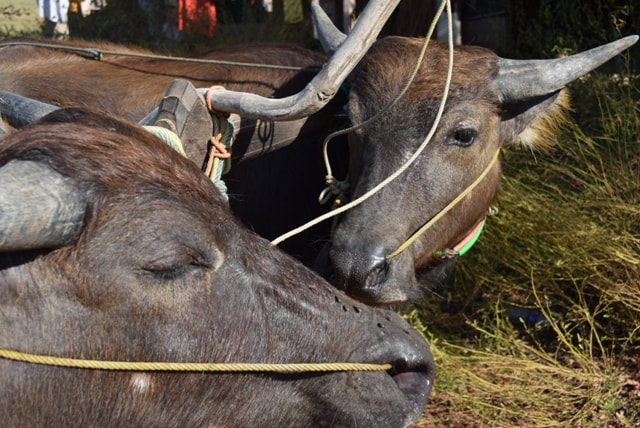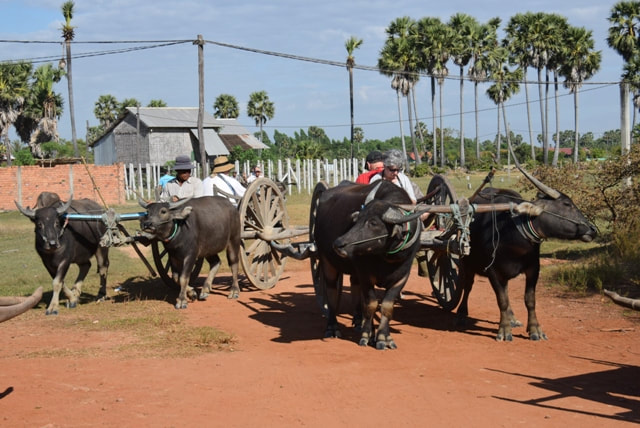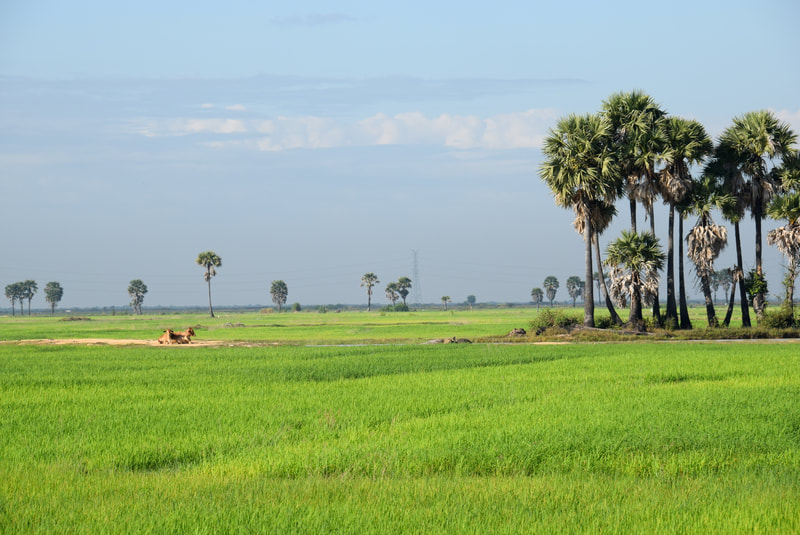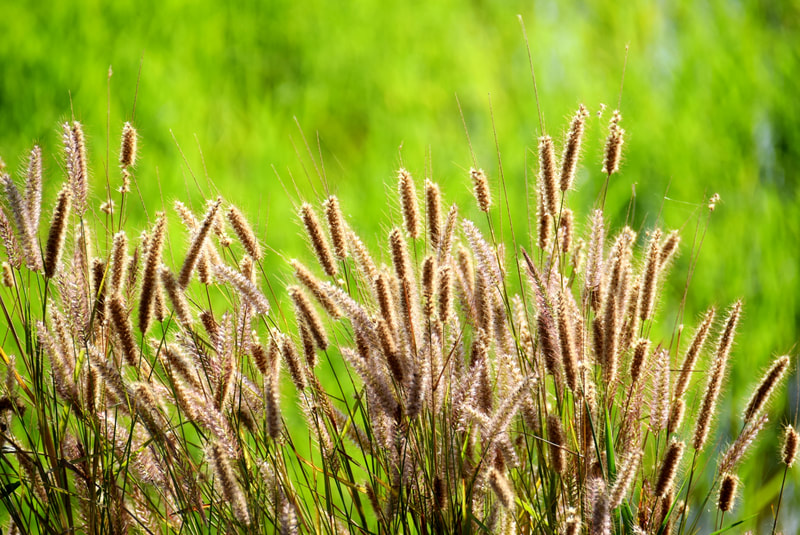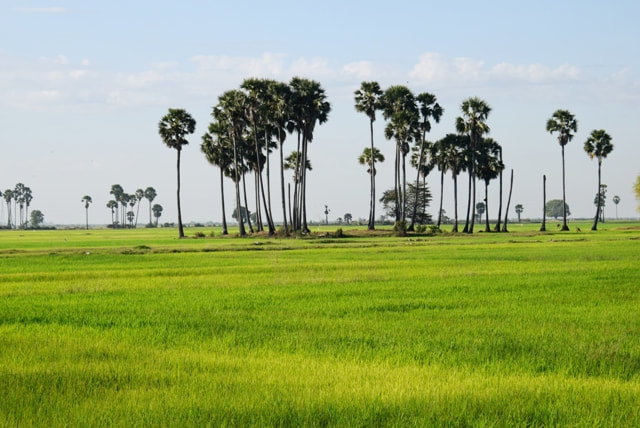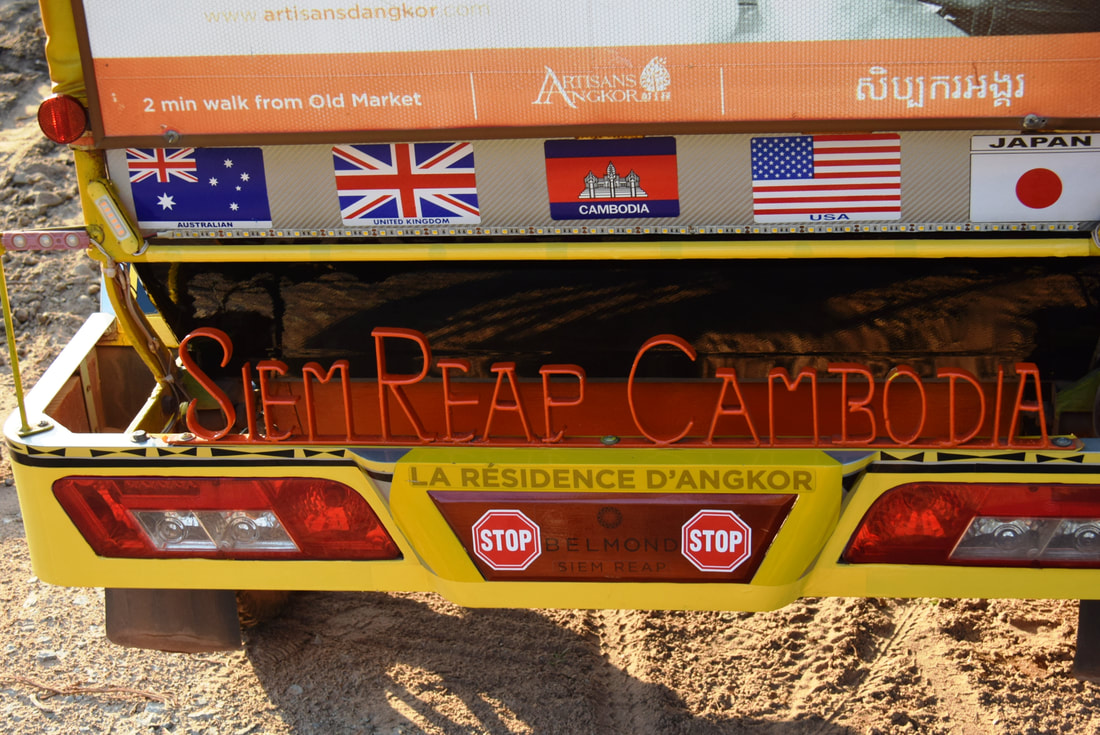When you think of Cambodia, the violent history of the Khmer Rouge is probably the first thing that comes to mind, but after being there, I think the variety of life and experiences is what I'll remember most. I know as a kid I probably said, "Oh, I hope I can go to Disneyland one day" and not "It would be cool to visit Cambodia," but I have to say I enjoyed it more than my time with Mickey Mouse. Cambodia was the first leg of our four country tour and we started with a free day on our own to see what wasn't on the tour agenda. I would definitely recommend the Home Chic Hotel for a great place at a budget price. They booked our tours and got our rides with a smile!
The local market is always a good place to start and explore to get a feel for the local vibe. Cambodia had both a day and night market, each with unique offerings. Whether you wanted something fresh to eat, some jewelry, a local handicraft, or the one thing you didn't even know you were looking for, the local market has it all.
From the city, we traveled out to the killing fields, the burial site for those killed by the Khmer Rouge from 1974-1979. The Khmer Rouge was the name given to the Communist party and the brutal regime that took over Cambodia during that time and controlled the country under Pol Pot. Those against Pol Pot and those considered enemies of the state, along with more than two million people, died from torture, starvation, disease, or overwork, in what is often referred to as the Cambodian genocide.
We learned a lot of history on our tour and I found it interesting that the Ho Chi Minh Trail actually went through Cambodia. There were many Vietnamese who fought with rebels in Cambodia and they were given access to that part of the land because of the limited land area in Vietnam. If you haven't looked at a map recently, you might not know how long and narrow Vietnam is and how convenient it would be to just come down through Cambodia. I don't know if I was sleeping that day in history class or if it wasn't in the curriculum, but it was pretty interesting to me.
The Royal Palace and the National Museum house many treasure of Cambodian history, and reflect the architectural designs of past eras. All of the buildings had the traditional Naga roof with the snakes coming down from heaven to connect with the spirits on earth. The site was chosen by a Commission of Royal Ministers and Astrologers because it had great geographical significance connected to the King, who was regarded as a direct descendant of the gods, and whose role it was to live and govern on earth under the influence of heaven.
The spectacular buildings of the Royal Palace have decorative golden colored tiles that represent the serpent's scales and shimmer in the afternoon sun. The buildings are used for high official celebrations, coronations, and audiences with foreign dignitaries and government officials. You can also see a magnificent 17th century emerald Buddha statue, made of Baccarat crystal and solid gold. It weighs 90 kilograms and is adorned with 9,584 diamonds. It was amazing to see the splendor of the palace and its treasures in contrast with the poverty of much of the population. But, that can be said for many countries that we have lived in and visited.
A trip to any country cannot be complete without some type of cultural dance event or show. The Apsara dance is Cambodia's form of ballet, and the dancers show their flexibility and style in the movements of their hands, feet, and bodies. If you don't think it is a skill, try and bend your fingers and feet into a pretzel and look good doing it! The show included a dinner where we had a tapioca and pumpkin dessert, apparently a common combination, and honestly kind of tasty!
In the Buddhist tradition, spirit houses are very common and quite interesting and we saw them in several of the countries we visited. They are said to bring good luck to the home as the spirits resting there would bless the home. But, if there was bad luck, the house could be said to be responsible, taken down, and burned and a new one purchased. There were several types we saw: some for the ancestor's spirits to rest before they traveled on, some for homeless spirits, and others for children's spirits.
Angkor was the capital city of the Khmer Empire ("Khmer" a Southeast Asian ethnic group native to Cambodia). Angkor Wat means "temple city" and the temples throughout Cambodia are a mix of Hindu and Buddhist. Angkor Wat was built for King Suryavarman II in the early 12th century as his state temple and capital city, dedicated to the Hindu god Vishnu. It became a Buddhist temple at the end of that century and has become a symbol of Cambodia, appearing on its national flag.
As you can see in some of the pictures, the steps up to the top are narrow and steep, mainly meant as a way up to the heavens more than a convenient walkway for people. Some of the temples in the area have large trees growing out of them as if the forest has risen up and taken them over. Several families of monkeys could be found living in the temples throughout the property. The sheer vastness of the temple and its buildings was what made it most impressive, along with the amount of work and craftsmanship that had to have gone into build the buildings themselves.
Lots of children were hawking souvenirs at every temple site, doing their best to try and convince you that what they had was what you needed to remember your trip. I know that everyone has to take advantage of the situations to help themselves financially, but it always hurts my heart when children are working and seem as if they have little hope. I always pray that they will find that connection to God and be restored to Him.
Who doesn't love a good monkey picture? Other than someone who has been chased or bitten by a monkey, everyone! They were quite entertaining but you still felt like they should be in the jungle living a monkey life instead of hanging out at the temple to get a free banana. It makes you wish you could get a glimpse into the past just to see what it had been like when it was more nature and jungle instead of tuktuk and tour bus.
Visiting Angkor Wat, Angkor Thom, and Ta Prohm Temple is a place where you find yourself looking for Indiana Jones or Lara Croft, Tomb Raider. A lot of the jungle has been left untouched and you can imagine the ancient cultures living there. I would say it is a Machu Picchu type place in that it has a lot of historical significance and the vastness of it just seems to come upon you all of a sudden as you get closer to it.
In case you were a little tired of modern transportation or really wanted to see what it was like in the old days, an ox cart ride was a great way to remind you to be grateful for cushioned seats and horsepower under the hood. Regardless, it was a nice, leisurely way to see a little countryside in Siam Reap and helped the local economy; hopefully we were lighter for the animals than pulling a plow! The rice fields were as far as you could see on the flat plains and you could see green for miles.
When most people think of living on a house boat, I don't think they had in mind what we visited on the Tonle Sap Lake. There are actually four floating villages around Siem Reap where people live year round. As well as the floating villages, there are also stilted villages along the banks of Tonle Sap Lake, where houses and buildings rest on tall, thin stilts that keep the occupants dry during the wet season, with giant ladders to reach the lower levels during the dry season. The villages have stores and schools and are said to be close-knit communities.
Cambodia - the "Kingdom of Wonder"-was a place I remember because of its diversity and vibrant culture.
All photographs are copyrighted and the property of Cathleen L Carpenter Photography
